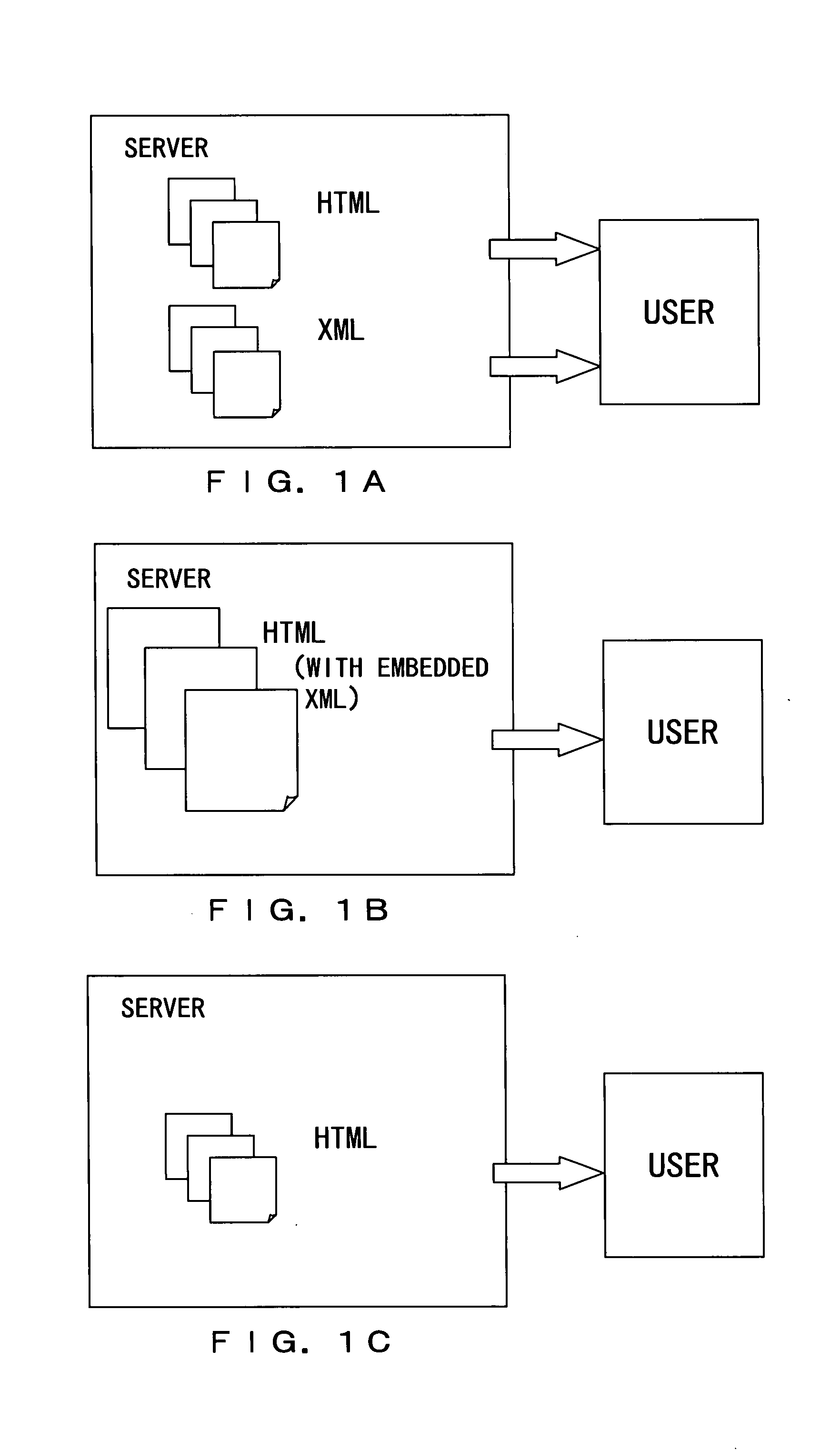Method of converting structured data
- Summary
- Abstract
- Description
- Claims
- Application Information
AI Technical Summary
Benefits of technology
Problems solved by technology
Method used
Image
Examples
Embodiment Construction
[0074] Hereinafter, one embodiment of the present invention will be explained by referring to the drawings.
[0075]FIG. 1C shows a conversion from XML data into HTML data performed by a structured data conversion device according to the present embodiment.
[0076] In the structured data conversion device according to the present embodiment, when XML data is converted into HTML data, information that would be lost in methods of conventional techniques when being converted into HTML and that is necessary for reconversion into XML data (this information is referred to as inverse conversion information hereinafter) is efficiently embedded in HTML data.
[0077] Thereby, it is possible to suppress increases in data size that would be caused after the conversion, in contrast to the method of embedding the entirety of the original XML data as shown in FIG. 1B. Additionally, this inverse conversion information is information specifying the correspondence between tag names and element contents t...
PUM
 Login to View More
Login to View More Abstract
Description
Claims
Application Information
 Login to View More
Login to View More - R&D
- Intellectual Property
- Life Sciences
- Materials
- Tech Scout
- Unparalleled Data Quality
- Higher Quality Content
- 60% Fewer Hallucinations
Browse by: Latest US Patents, China's latest patents, Technical Efficacy Thesaurus, Application Domain, Technology Topic, Popular Technical Reports.
© 2025 PatSnap. All rights reserved.Legal|Privacy policy|Modern Slavery Act Transparency Statement|Sitemap|About US| Contact US: help@patsnap.com



